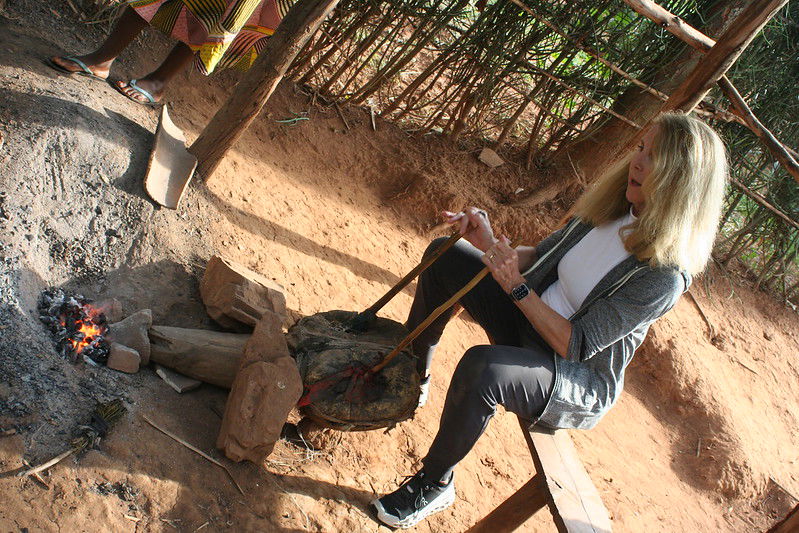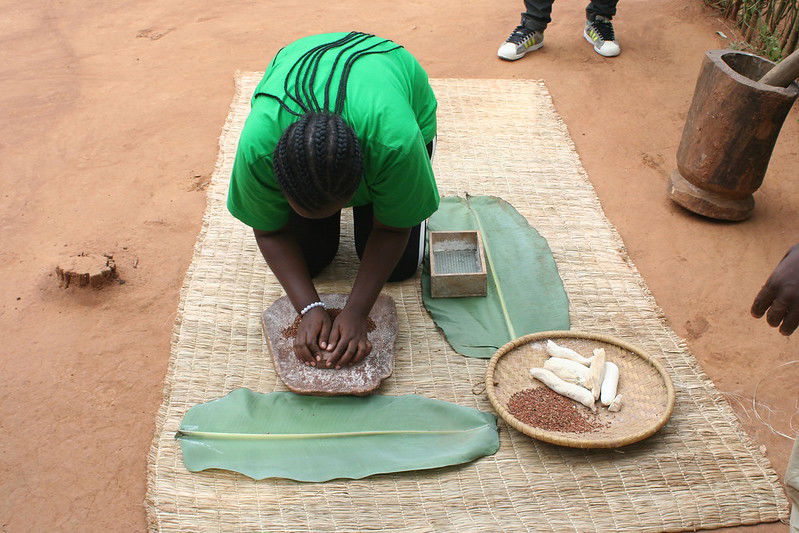Memorable Experiences, Courtesy of Akagera Traditional Cultural Village
Cultural experiences offered by different tour operators in Rwanda are designed to give foreign tourists a glimpse into the country's cultural heritage. These experiences are also recommended for the new generation of Rwandans who are detached from their roots. As a domestic tourist with limited knowledge of my own culture, I always grab every opportunity to learn more.
While in Nyankora Village found in Rwinkwavu Sector, Kayonza District, I visited the Akagera Traditional Cultural Village. In the company of fellow tourists, I embarked on a study tour that enabled me to gather interesting information and develop new skills.
The cultural village was built in 2020 to showcase and preserve the culture of the people of Rwanda while contributing to the socio-economic transformation of the local community. Speaking of the community, the village provides free milk and eggs to destitute single mothers from the community. In addition, the privately run establishment empowers the youth through education, skills development and job creation.

Different artifacts, handcrafted by members of the local community, are displayed for sale at the reception.
A tour of the village was a great opportunity to revisit the past and put history into perspective. For starters, I delved into the concept of shelter in the traditional Rwandan society.
In his 1943 paper titled Theory of Human Motivation, Abraham Maslow documented his findings on the topic of universal needs of society. The bottom-up classification, illustrated in the said paper, presented the Maslow’s Hierarchy of Needs. This widely discussed theorem recognizes shelter as a basic need. Over the centuries, housing has evolved to suit the advanced needs of modern societies. However, the traditional Rwandan house remains a powerful symbol of cultural significance.
Our forefathers incorporated cultural norms into their intricate designs. There is meaning attached to the dimensions, positioning of pillars, partitions, materials used and every little detail. Furthermore, there are distinctive features characterizing houses owned by the pastoralists and those belonging to the cultivators of the land.

A traditional Rwandan house is a powerful symbol of cultural significance
After a keen observation of the pre-colonial Rwandan houses, I turned my attention to blacksmiths plying their craft in the traditional Rwandan societies. For the record, craftsmanship is embroiled into Rwandan history. Blacksmiths played an important role in the manufacturing of agricultural tools and weapons used to defend and expand the kingdom.
The equipments used and the science behind their invention are a statement to the level of innovation attained way before formal education was introduced. During the tour, we were taught, in a hands-on way, how to light a fire, burn metallic material and sculpture a wide variety of objects.
Unleashing the blacksmith in me was a very fulfilling experience. As expected, this tour broadened my horizon and equipped me with useful skills. Planning a stopover before or after your next visit to the Akagera National Park is highly recommended.

A foreign tourist learning the art of blacksmithing
Shortly thereafter, I rolled up my sleeves again. This time, participating in the process of producing banana beer. We started by peeling off ripe bananas sourced from the farm in the backyard. Then we used our hands to mash the bananas and filter its juice.
Since the fermentation process takes a few days, we skipped it. Instead, our host served us previously brewed beer. To date, this processing method is widely practiced in rural Rwanda. In the Eastern Province, most households are surrounded by banana farms. That explains the popularity of the product in this part of the country.
Prior to our beer processing experience, I strolled around the farm in the backyard. Following my host's lead, I took a closer look at different types of bananas. At the end of the day, I was able to distinguish fruits from staple food.

Tourists learning in a hands-on way
We also spared some time to learn a couple of traditional household chores carried out by women. Under a watchful eye of our guide, we pounded cassava and ground sorghum.
While standing, I used a locally made wooden pestle and mortar to pound and crush cassava. Then I knelt down and ground some sorghum placed on a flat-surfaced stone. Grinding is done in order to produce flour.
Food and beer have sparked our celebrations for centuries, thanks to produce like cassava and sorghum. Rwandan history depicts a nation boasting stable food security. However, a handful of prolonged dry seasons have been documented over the centuries. During the ensuing famines, the people turned to the two drought-resistant crops.

Our guide demonstrating how grinding sorghum is done
Our memorable tour was capped by an electrifying performance, courtesy of Nyankora kids. Through their cultural troupe, the kids embrace their culture and earn much-needed items like exercise books and other scholarly materials. In addition, the initiative contributes to the development of talent.
A visit to Rwanda is never complete without entertainment from traditional dancers. The popular dance forms an integral part of the country's ceremonies, festivals, social gatherings and storytelling.
During the captivating performances, visitors are allowed to join the dancers on the stage and emulate their moves. The troupe comprises a group of dancers and their choir. The latter is made up of singers and drummers. Their highly choreographed show involves majestic swaying motions, coordinated steps and gravity-defying leaps.

Captivating performance staged by Nyankora kids